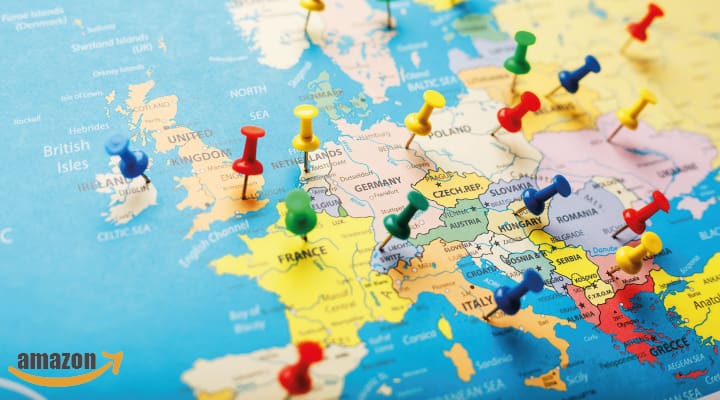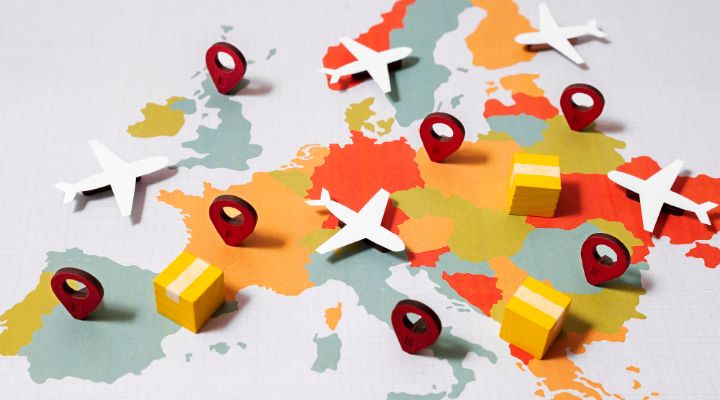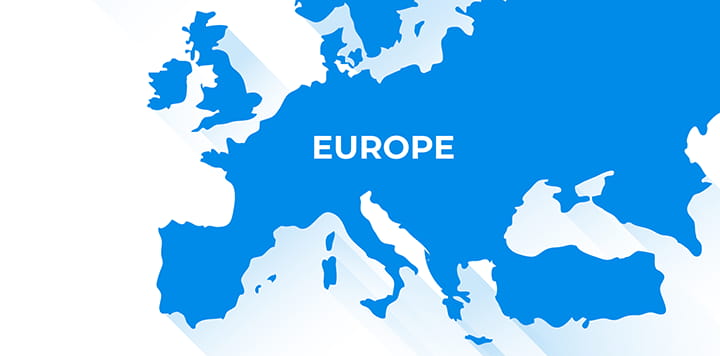
Amazon European Distribution Strategy
Amazon’s European distribution strategy has been a key factor in the company’s success in the region. With its customer-centric business model and a focus on efficiency, Amazon has made significant strides in expanding its workforce and logistics network across Europe. Analysts suggest that this strategy has allowed the company to gain a strong foothold in the region and helped them adapt to the changing market dynamics during Amazon’s European expansion pandemic.
Amazon’s primary challenge with its European distribution strategy is balancing centralization and decentralization of its distribution centers. The company has been operating in major markets such as the United Kingdom, Germany, and France, attempting to devise an optimal distribution strategy that caters to the unique characteristics of suppliers and customers in each country. Amazon’s ability to execute its distribution strategy effectively will be paramount for its continued growth and expansion in the European market Amazon European distribution strategy.
The evolution of Amazon’s distribution system dates back to the company’s inception. Over time, Amazon Europe has continuously reconfigured its distribution network in light of expected growth, product proliferation, and geographical expansion in Europe. The company’s strategic decisions are crucial in providing a seamless customer experience, fast and reliable delivery services, and ensuring a competitive advantage over rivals in the increasingly crowded European e-commerce landscape.
Understanding Amazon’s Business Model in Europe
Revenue Streams
One of Amazon’s significant revenue streams in Europe is its e-commerce platform. With a strong presence in major EU markets, such as the UK, France, and Germany, Amazon benefits from product sales and third-party seller services. Additionally, Amazon Web Services contribute to the company’s overall revenue in Europe. Another noteworthy revenue stream is Amazon’s subscription-based service, Amazon Prime, which provides members with various perks like expedited shipping and access to exclusive content.
Key Partnerships
Amazon has established crucial partnerships to support its European distribution strategy. The company works with diverse suppliers and distributors, encompassing local and international players, to ensure seamless product delivery across European markets. Furthermore, Amazon collaborates with logistics providers, such as DHL, UPS, and local postal services, to optimize transport efficiency and meet growing regional demands.
Customers Segments
Amazon targets a broad range of European customer segments due to its vast products and services. Its primary customer demographic includes consumers who shop for everyday essentials, electronics, clothing, and more. Additionally, Amazon Business caters to business customers by streamlining procurement processes for organizations of all sizes. The company has also focused on capturing the growing European SME market in recent years, providing support and resources for these businesses to thrive on Amazon’s platform.
European Market Overview
Amazon’s European distribution strategy focuses on efficiently delivering products to customers across the continent. Its primary distribution centers are in the United Kingdom, Germany, and France, covering various products and catering to a diverse customer base.
An essential aspect of Amazon’s European distribution strategy is optimizing every link in the supply chain, which includes streamlining delivery timelines and constantly adapting to customer demands. The company believes in balancing centralization and decentralization within its distribution centers, ensuring maximum agility and adaptability.
Notably, Amazon’s European distribution faces multiple challenges, including:
- Diverse customer preferences: European customers have different shopping habits, and Amazon must cater to these preferences by offering a wide range of products.
- Language and currency barriers: Europe comprises numerous countries with different languages and currencies, demanding efficient localization and payment processing.
- Logistical complexity: Shipping goods across European borders can be time-consuming and complicated, requiring Amazon to navigate customs regulations and establish reliable partnerships with local carriers.
Despite these obstacles, Amazon perseveres in expanding and improving its European distribution strategy. Recent statistics point to the company’s continued success in the region:
- Market share: As of 2021, Amazon’s European market share in eCommerce reached 31.1%.
- Revenue: In 2020, Amazon generated €44 billion ($53.6 billion) in net sales across Europe, a 36% increase from the previous year.
Amazon Global Expansion Strategy
To maintain its competitive edge, Amazon takes advantage of innovative technologies, intricate logistics networks, and adaptive strategies, ensuring that its European distribution continues to be an essential aspect of Amazon global expansion strategy success.
Entry Into Amazon European Distribution Strategy
Amazon’s entry into the European market was marked by strategic decisions that enabled the company to penetrate and develop the market effectively. By leveraging its know-how and resources, Amazon successfully expanded its presence in the European market, reaching millions of new customers across 28 countries.
Market Penetration
Amazon’s initial market penetration strategy in Europe focused on offering a wide range of products at competitive prices. The company relied on its advanced distribution network and efficient global supply chain management to provide quick delivery times to customers. This approach proved attractive to European consumers, contributing to Amazon’s rapid market penetration. The company also utilized its Seller Central platform to enable third-party businesses to access the European market, thus increasing product variety and further enhancing its market presence.
Amazon customized its offering using customer data and market insights to cater to European consumers’ needs and preferences. The company adapted its recommendations, website layout, and product assortment to regional trends, effectively improving customer satisfaction and trust.
Market Development
Amazon expanded its operations across several European countries as part of its European market development strategy. The company established dedicated websites and distribution centers in key markets such as the United Kingdom, Germany, France, Spain, and Italy. This allowed Amazon to serve these markets better, reduce shipping costs, and tailor its product offerings to local needs.
Amazon’s market development efforts also involved the integration of local merchants and suppliers into its platform. By forming partnerships with European suppliers, Amazon could source products locally, reducing costs and further enhancing its competitiveness in the European market.
The company’s commitment to innovation has also positively impacted its European market development strategy. The introduction of Amazon Web Services and other services such as Prime Video and Alexa have diversified Amazon’s product offering and generated additional revenue streams in the region.
In summary, Amazon’s European entry strategy was characterized by effective market penetration and development activities. The company leveraged its technological capabilities, vast product selection, and strategic partnerships to establish a strong presence in the European market and successfully serve millions of customers across 28 countries.
Distribution Network in Europe

Warehousing
Amazon’s European distribution network has evolved to accommodate growth, product proliferation, and geographical expansion. The company operates multiple distribution centers in countries such as the United Kingdom, Germany, and France. Warehouse locations are strategically chosen to maximize coverage while minimizing transit times and costs.
A key aspect of Amazon’s warehousing strategy is maintaining high levels of quality and productivity. They achieve this through performance metrics, such as items picked per hour, free replacement rate, inventory accuracy, and time taken from order confirmation to shipment. These measures help Amazon ensure that products are accurately picked, packed, and shipped on time.
Transportation and Delivery
To effectively manage transportation and delivery in Europe, Amazon carefully considers the characteristics of suppliers and customers in each market. They rely on a mix of their delivery fleet and partnerships with local courier services to ensure timely deliveries across the continent.
Amazon also uses advanced technology, such as route optimization algorithms, to improve the efficiency of the delivery process. This helps reduce delivery times, distances covered, and costs per unit shipped. Furthermore, they continuously seek to expand their distribution network by investing in logistics infrastructure, such as launching new delivery stations and partnering with local entrepreneurs to establish small delivery businesses.
By adjusting its distribution network to suit the changing dynamics of the European market, Amazon can efficiently serve its customers and maintain its competitive edge.
Evolving Amazon European Distribution Strategy
Investment in Logistics Technology
Amazon’s European distribution strategy invests in advanced logistics technology to streamline its supply chain. This allows the company to efficiently manage its inventory, track shipments, and forecast customer demand across various regions. For instance, implementing robots in fulfillment centers has significantly boosted productivity while reducing manual labor and associated costs. In addition, Amazon employs machine learning algorithms to analyze vast amounts of data, enabling it to optimize routes and better predict delivery times.
Expansion of Delivery Options
As part of its commitment to expanding its European distribution network, Amazon offers a variety of delivery options to cater to different customer needs. The company’s fast and reliable shipping services, such as Prime Now, provide same-day or next-day delivery for millions of products. Moreover, Amazon has introduced Amazon Locker – a secure and self-service pick-up station – for added convenience. The company utilizes a network of third-party carriers and Amazon’s delivery fleet in remote or rural areas to ensure timely deliveries.
With constant technological advancements and expansion of delivery options, Amazon’s European Distribution strategy continues to evolve, ensuring it maintains a strong presence in European markets.
Regulatory Challenges in Europe

Amazon’s European distribution strategy faces various regulatory challenges in different countries within the region. In Germany and France, strict regulations affect the company’s ability to operate flexibly. For instance, labor laws in these countries are notoriously stringent, impacting Amazon’s workforce management and its relationship with unions.
Amazon experienced difficulties with its main logistics depot in Italy when a COVID-19 outbreak led to an 11-day strike. The strike ended after Amazon agreed to additional employee concessions, highlighting how labor disputes can disrupt the company’s operations. Moreover, Amazon has to continuously adjust to the European Union’s General Data Protection Regulation (GDPR), which governs the handling of personal data.
Another challenge is the low development of Electronic Data Interchange (EDI) in Europe. This lack of technological infrastructure affects Amazon’s supply chain management, requiring the company to modify its strategies according to unique European circumstances. Additionally, it must adapt to local payment options and preferences, which differ significantly from those in the US.
In conclusion, Amazon’s European distribution strategy must account for various regulatory challenges like labor laws, data protection, and technology infrastructure. Navigating these hurdles is crucial to the company’s continued success in Europe.
Impacts of Brexit on Amazon European Distribution Strategy
Brexit has had a notable impact on Amazon’s European distribution strategy, leading to changes in various aspects. One of the most significant consequences is Amazon’s sourcing and procurement shift. As the UK departed from the EU single market, standard World Trade Organization (WTO) tariffs between 2% and 13% now apply to imports and exports between the UK and EU. This change increases the costs for Amazon to trade across European borders. Moreover, the depreciation of the British pound makes importing products into the UK less attractive, potentially affecting product prices and availability on the platform.
Brexit has also impacted the labor force for Amazon’s warehouses. The company relied heavily on immigrant workers to staff its UK facilities. However, post-Brexit immigration rules can make recruiting and retaining qualified personnel difficult. Hence, this situation could hinder Amazon’s future staffing in the region.
In response to these challenges, Amazon might need to reassess its European distribution network. Prioritizing decentralized distribution centers in different countries could mitigate the impacts of tariffs and import-export costs. This approach also allows the company to adapt swiftly to the changing regulatory environment.
Moreover, Brexit can directly influence Amazon’s operational efficiency in Europe. The increased trade friction and the customs and border checks required for shipments between the UK and the EU can result in slower customer delivery times. Consequently, maintaining optimal customer satisfaction for its European market might demand further infrastructure and shipping capabilities investments.
Despite the apparent challenges, various opportunities can also arise from Brexit for Amazon. For instance, the company can capitalize on the changing landscape by locating distribution centers in strategic regional positions. By doing so, Amazon could minimize logistical complexities, reduce shipping times, and maintain competitive pricing even in the post-Brexit era.
Future Outlook
Sustainability Initiatives
Amazon has been taking significant steps towards more sustainable practices in its European distribution strategy. The company has invested in renewable energy projects to power their fulfillment centers. This shift towards renewable energy reduces their carbon footprint and contributes to long-term cost reductions for the organization.
Additionally, Amazon has implemented waste reduction systems in their European warehouses, such as optimizing packaging and reducing plastic usage. These efforts and their renewable energy investments illustrate Amazon’s commitment to a more sustainable future within its European distribution network.
New Market Opportunities
Amazon’s European expansion has led to increased international revenue and a broader customer base. As the company continues to grow in the European market, it faces new opportunities in emerging sectors like grocery retail and services.
For example, the development of Amazon Fresh and Amazon Pantry showcases the company’s interest in the grocery sector. Continued growth in this domain allows Amazon to capture a significant portion of the online and offline European grocery market.
Similarly, Amazon is tapping into the European services market with the expansion of Amazon Home Services. By offering a platform for professionals to offer their services to customers, Amazon can take advantage of the growing gig economy in Europe and establish itself as a leader in service-based solutions.
In conclusion, Amazon’s European distribution strategy adapts to new market opportunities and works towards more sustainable practices. As the company continues to expand throughout Europe, these initiatives will play a significant role in shaping the future of its distribution network.
Frequently Asked Questions about Amazon European Distribution Strategy
How does Amazon adapt its distribution strategy to European markets?
Amazon adapted its distribution strategy to European markets by creating a European Distribution Network (EDN). The EDN was designed to efficiently increase customer value and reduce operational costs while maintaining high-quality service. Amazon implemented centralized and decentralized distribution centers across European countries to optimize inventory management and delivery times. Each country often has a unique distribution strategy tailored to local market conditions and regulations.
What challenges does Amazon face in Europe’s supply chain?
Amazon encounters various challenges in Europe’s supply chain, such as varying regulations, customs procedures, and labor laws across different countries. European markets also have diverse customer preferences and expectations, requiring localized marketing strategies and product offerings. Also, Amazon must manage complex logistics and transportation networks across many European countries, ensuring timely and accurate deliveries.

What are the key components of Amazon’s European distribution system?
Amazon’s European distribution system involves a combination of centralized and decentralized distribution centers, fulfillment centers, and delivery hubs. Centralized distribution centers store inventory for multiple countries, while decentralized centers focus on one specific country’s needs. Fulfillment centers process and ship customer orders, whereas delivery hubs serve as the last-mile station for shipments to be dispatched to recipients. Amazon also utilizes data-driven demand forecasting and inventory management systems to optimize distribution.
How did Amazon’s distribution strategy evolve after entering the European market?
After entering the European market in the late 1990s, Amazon initially relied on a mix of local and international suppliers to fulfill orders. However, as its presence grew, the company established a more extensive European Distribution Network to manage inventory better and meet customer demand. Over time, Amazon increased investments in fulfillment centers, automated warehousing technologies, and local delivery infrastructure to optimize its European distribution strategy.
What role do Fulfillment Centers play in Amazon’s European distribution?
Fulfillment Centers are critical to Amazon’s European distribution system, as they directly process and ship customer orders. They manage inventory, utilize advanced warehousing technologies for efficient product handling, and ensure that orders are accurately picked, packed, and dispatched for delivery. Amazon employs strict performance metrics in its fulfillment centers to maintain high levels of productivity and quality.
How does Amazon deal with varying regulations across European countries?
Amazon addresses varying regulations across European countries by customizing its distribution strategy in each market and often establishing localized distribution centers. The company adheres to each country’s specific labor laws, customs requirements, and tax regulations. Amazon also maintains an adaptive approach, continuously adjusting its strategies to accommodate changes in regulatory environments.
Denes, with 20 years experience in logistics, holds a Logistics Manager degree from Budapest’s Logistics Association and has penned a thesis on mobile devices. Venturing into e-commerce, Denes specializes in Fulfilled By Amazon and passionately educates others about Amazon selling techniques.